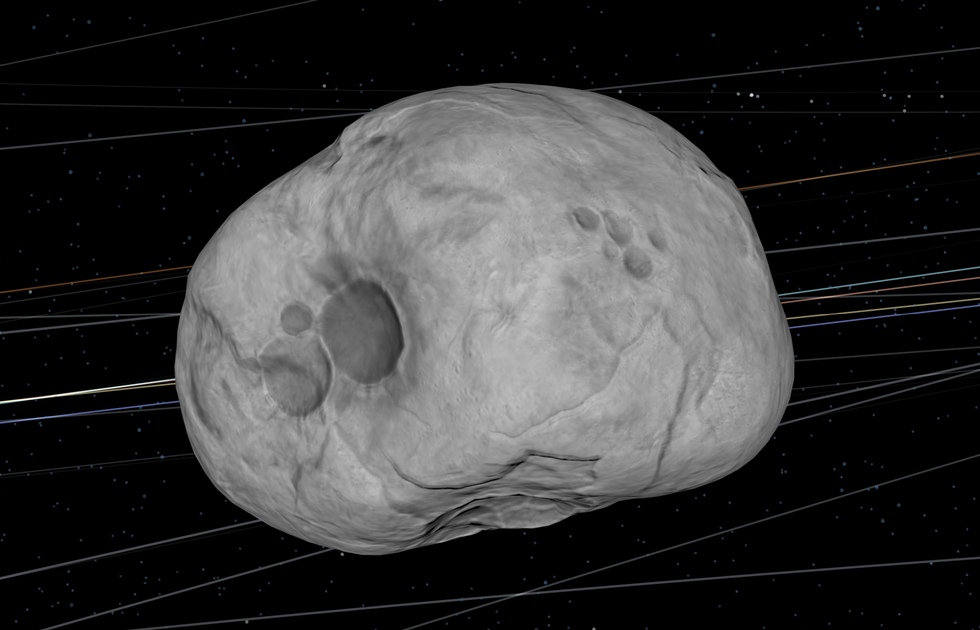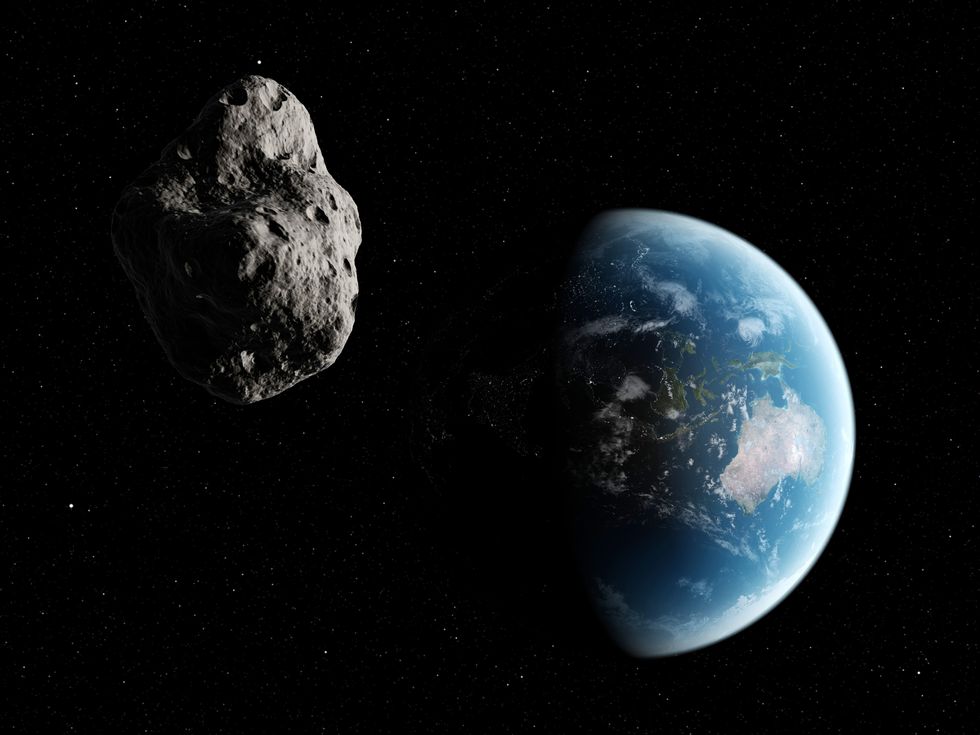A massive asteroid larger than Manhattan is set to make its closest approach to Earth in a century this Sunday - which is large enough to cause significant destruction to the planet.
The rocky behemoth, known as (887) Alinda, measures 4.2 kilometres wide and will pass within 7.63million miles of our planet.
Larger than 99 per cent of known space rocks, the asteroid ranks among the five largest celestial objects expected to come within 15 billion kilometres of Earth from now until 2200.
Jake Foster, a public astronomy officer at the Royal Observatory Greenwich, has confirmed that there is "no chance of Alinda coming close enough to be a concern to us".
Alinda, named after an ancient city, completes an orbit of the sun every 3.89 years and is part of the rocky remnants from the early solar system
NASA
"The effects would undoubtedly be globally catastrophic," Foster told the Metro.
Though only a third the size of the dinosaur-killing asteroid, Alinda's impact would release energy equivalent to "millions of nuclear bombs", as Foster added: "The shockwave that follows would likely flatten anything within a few hundred kilometres".
The aftermath would be devastating, with worldwide earthquakes and massive tidal waves triggered by tectonic activity, as Foster warned that survivors would face an "impact winter" as debris and dust filled the skies, saying: "Disruptions to ecosystems and animal life would be severe, with multiple species extinctions expected."
Despite the dramatic scenarios, experts believe that city-destroying asteroids have only a one per cent chance of striking Earth per century.
Should Earth need to defend against future asteroid threats, scientists have developed multiple potential strategies
GETTY
Should Earth need to defend against future asteroid threats, scientists have developed multiple potential strategies.
One option would require using nuclear energy to generate a powerful radiation pulse that could deflect an incoming asteroid from its course.
Another approach would deploy a "gravity tractor" spacecraft to fly alongside the threatening object, using its gravitational pull to alter the asteroid's trajectory.
"If Alinda ever did smack into the Earth, the impact would change life as we know it on this planet," he said, explaining: "Luckily, there is no chance of Alinda coming close enough to be a concern to us."
Alinda's next close approach to Earth won't occur until January 25 2087.

 By GB News (World News) | Created at 2025-01-11 12:01:30 | Updated at 2025-01-11 15:01:25
3 hours ago
By GB News (World News) | Created at 2025-01-11 12:01:30 | Updated at 2025-01-11 15:01:25
3 hours ago










